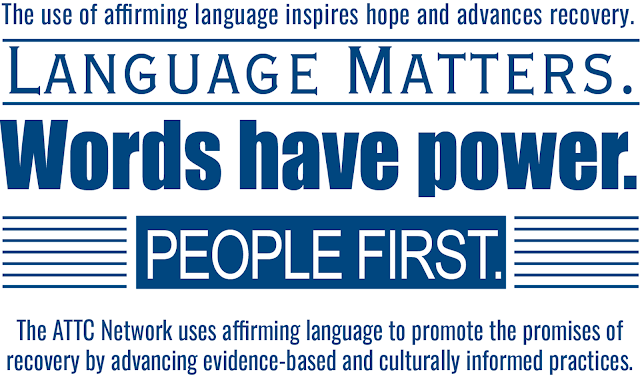By Paul Warren, LMSW, Research Project Director at the New York State Psychiatric Institute
The COVID-19 pandemic forced and expedited the use of technology
to provide services, training, and technical assistance (TA) on an
unprecedented scale across the globe, in all professions. From our present
vantage point, trainers and TA Providers may wonder “Will SUD workforce
training and TA ever go back to the way it was before COVID?”
I predict, “No”. End of story. Next
question. All kidding aside, I believe the answer is still “There is no
going back.”
As challenging as these adjustments in training and TA delivery have been, and despite the attrition of experienced trainers, the intentional and skilled use of technology has extended our reach, increased availability and, dare I be so bold as to suggest, more effectively prepared and supported the SUD workforce through training and TA interventions.
Let us now transition from broad forces to granular
experience and application.
As with in-person training, on-line training platforms like
Zoom and others succeed or fail based on a Trainers’ ability to engage
participants in the learning environment. A robust grounding in Adult Learning
principles is essential in contexts and in building and maintaining engagement
on-line requires significant adjustments on the part of the trainer.
Pearl One - the “training” begins before the “training” starts – also applicable to on-line TA provision. For in-person training, I often arrive an hour or at the very least 30 minutes prior to its start. Yes, to set up and manage logistics, and more importantly to build engagement. I’ve sincerely grown to enjoy on-line training because I’ve adjusted to achieve comparable levels of participation and engagement. I enter the virtual classroom/meeting space prior to the start time, I greet people as they enter, use their names, invite them to unmute and ask them questions about their real and virtual backgrounds. I express my sincere curiosity and extend a genuine welcome.
All of this “engagement” intentionally occurs prior to
launching into logistics or any training content. Of course, the time is
greatly condensed. Prior to opening the on-line classroom, I send waiting-room
messages, affirming their early presence and extending welcome.
Practically speaking, the classroom opens five-minutes prior to the official
start, and I also use the first five-minutes to continue to build engagement
and set a tone for the Learning Community Conversation.
Pearl Two – Consider facilitating Learning Community
Conversations (LCC). “What’s in a name?” you may ask. I believe a lot!
Especially if, in your role as Trainer/Facilitator, you truly respect the
experience and needs of Adult Learners.
As I’m building engagement and setting the tone in the five
minutes before and after the official start time, I’m planting the Learning
Community Conversation seeds. I’ve seen these seeds consistently flower during
many training sessions. Adult Learners have a lot to offer, they want to talk,
and they want to be heard. Establishing ground rules is essential to making
sure that the LCC remains safe, inclusive, and forward moving. The “Language
Matters” slide is an excellent visual anchor for the LCC. A related tip focuses
on the intentional use of reflections and summaries by
Trainers/Facilitators. As during the provision of direct client services, Adult
Learners also want/need to be heard. Trainers can continue to build engagement
by taking the extra moment invested in reflecting or summarizing what a
participant risks to offer during the LCC.
Pearl Three - In real estate, it’s “Location, Location,
Location”, in on-line training it’s “Duration, Duration, Duration”. Zoom time
and in-person time are not the same. “Zoom Fatigue” is real. I’ve experimented with duration within the bounds of deliverables needs.
Ideally, when possible, I don’t conduct on-line training or TA sessions that go
beyond three hours. Clearly this is an individual call based on many variables.
What I can anecdotally share is that I’ve found great benefit in putting
several days between Part One (first three-hours) and Part Two (second three-hours).
Many years ago, in another life I learned a very valuable
lesson that I’ve applied in this context, “less is more”. I find it highly
applicable when considering duration and amount of content to include in an
on-line training. Ultimately it comes down to intentional utilization of the
duration, methods and approaches that will best illuminate the content and
provide Adult Learners with opportunities to explore, adopt and implement.
It's likely that training and TA provision will never return to the way it was before COVID. Trainers and Technical Assistance providers have an opportunity to responsively devise ways to engage, establish synergistic Learning Community Conversations and to compose educational interventions that maximize the means of the moment. These intentional adjustments and the openness to flex holds great promise for a strong Substance Use Disorder workforce.


No comments:
Post a Comment